Abstract
1. Binocularly driven units were investigated in the cat's primary visual cortex.
2. It was found that a stimulus located correctly in the visual fields of both eyes was more effective in driving the units than a monocular stimulus, and much more effective than a binocular stimulus which was correctly positioned in only one eye: the response to the correctly located image in one eye is vetoed if the image is incorrectly located in the other eye.
3. The vertical and horizontal disparities of the paired retinal images that yielded the maximum response were measured in 87 units from seven cats: the range of horizontal disparities was 6·6°, of vertical disparities 2·2°.
4. With fixed convergence, different units will be optimally excited by objects lying at different distances. This may be the basic mechanism underlying depth discrimination in the cat.
Full text
PDF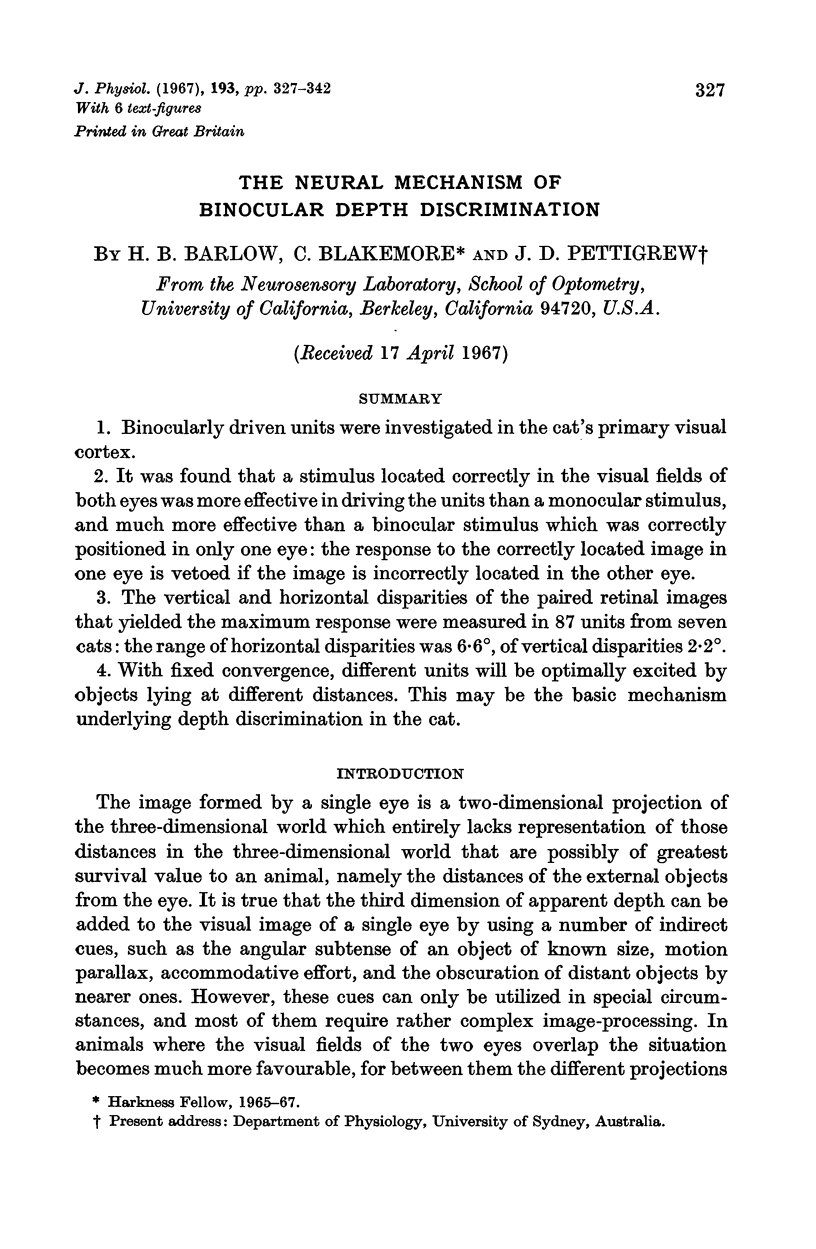
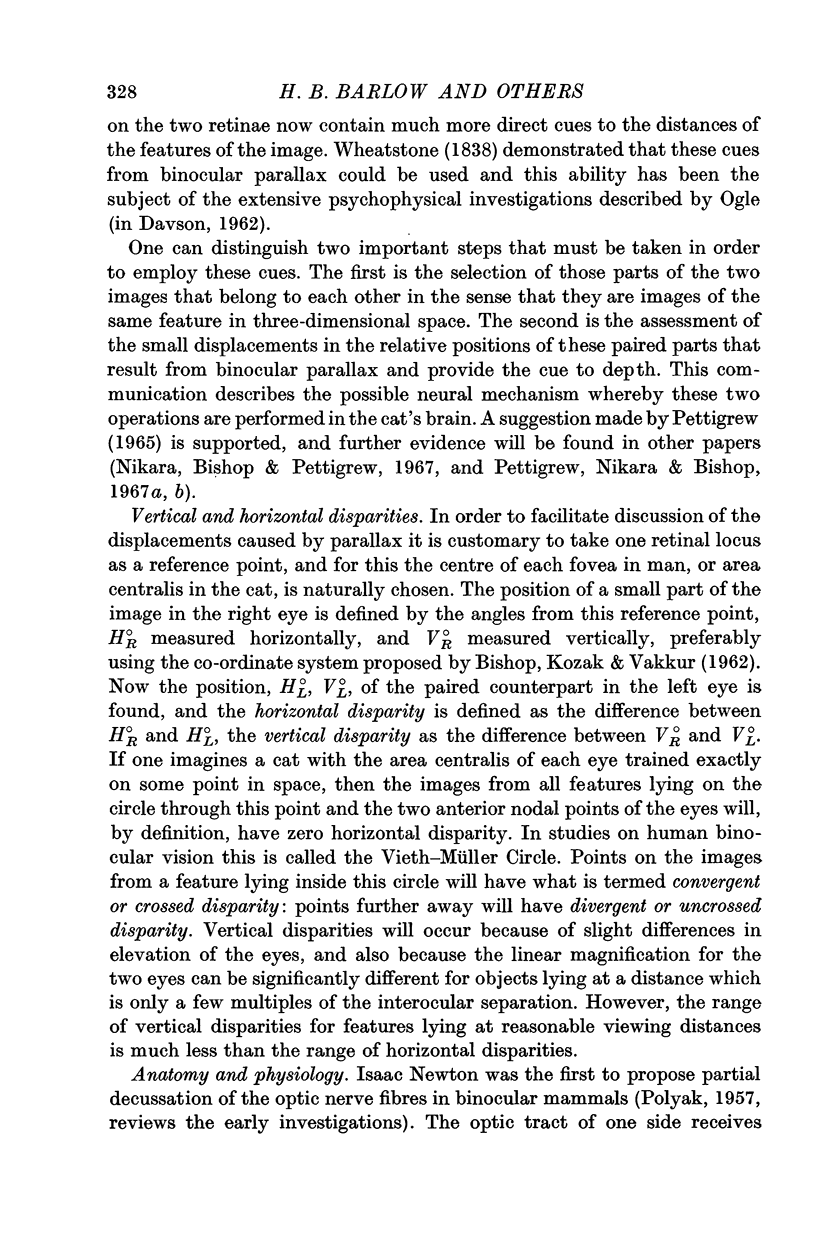
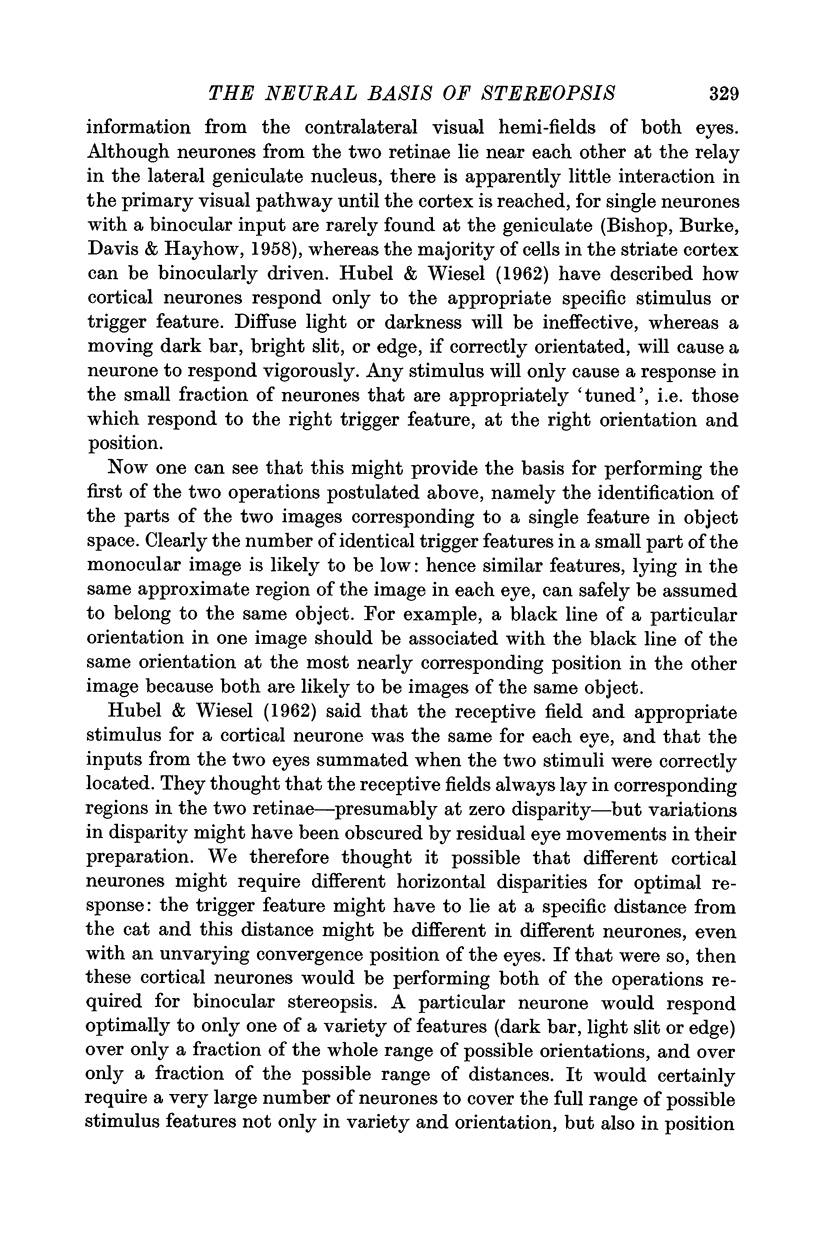
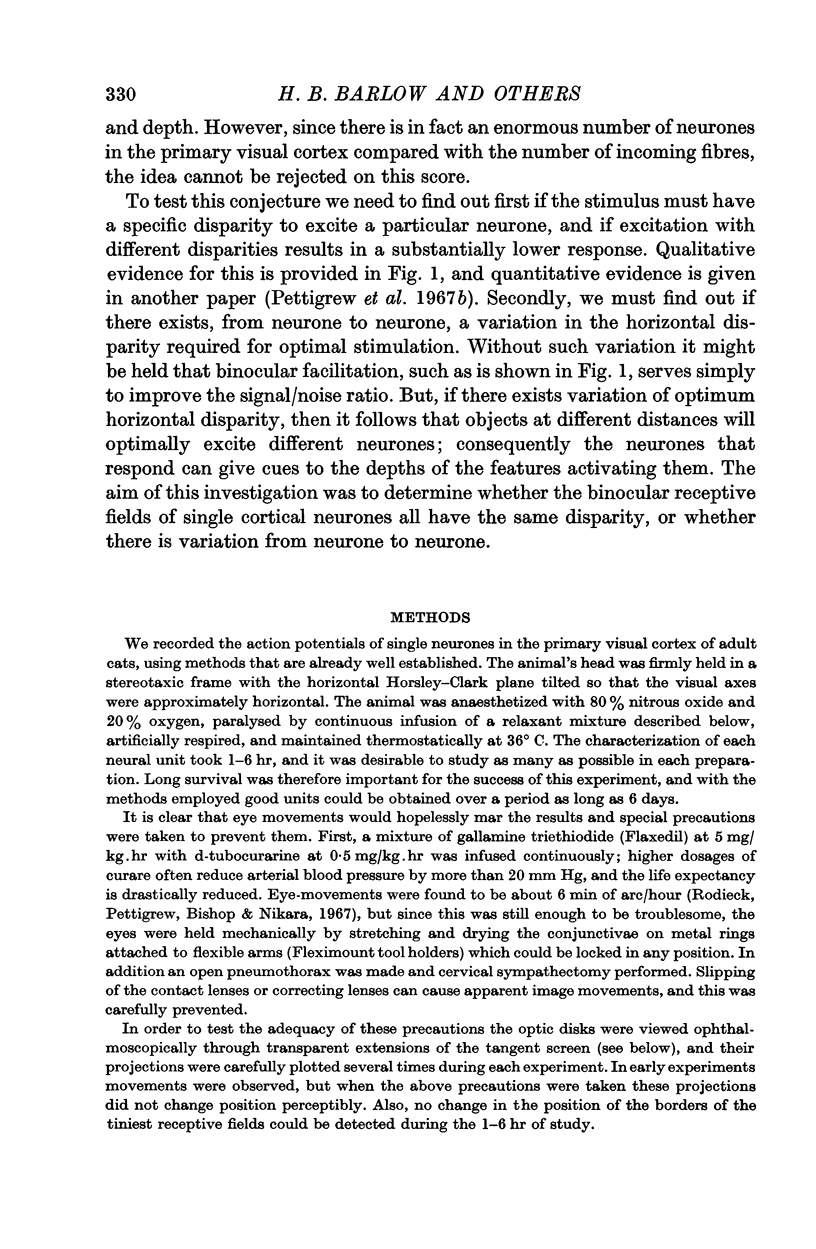
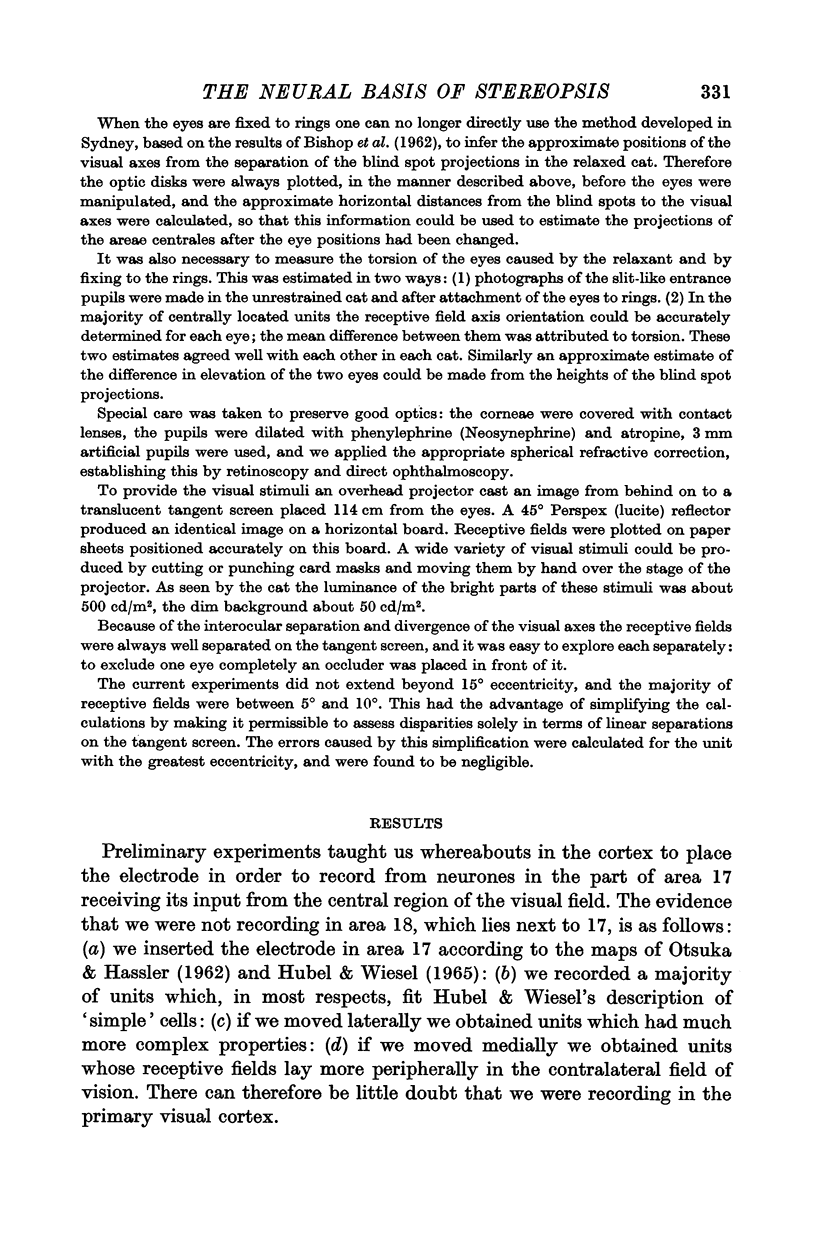
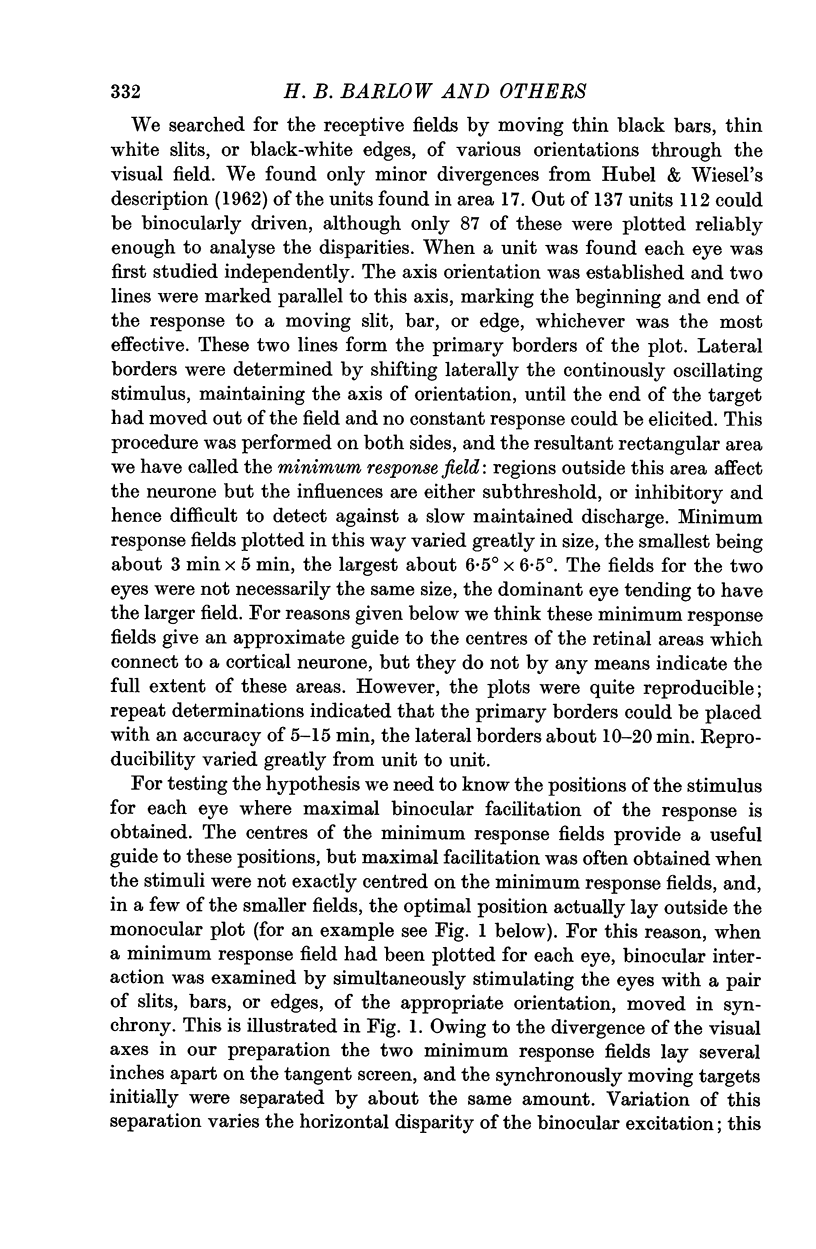
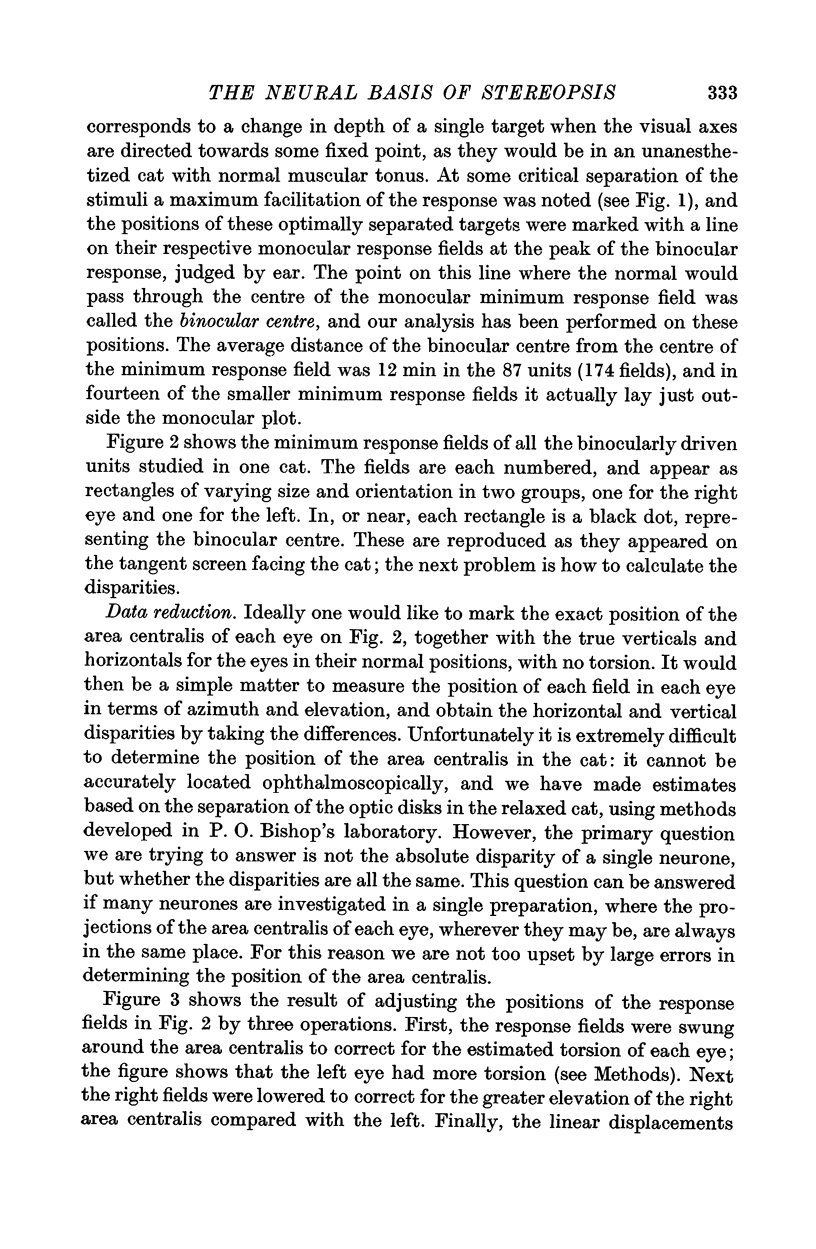
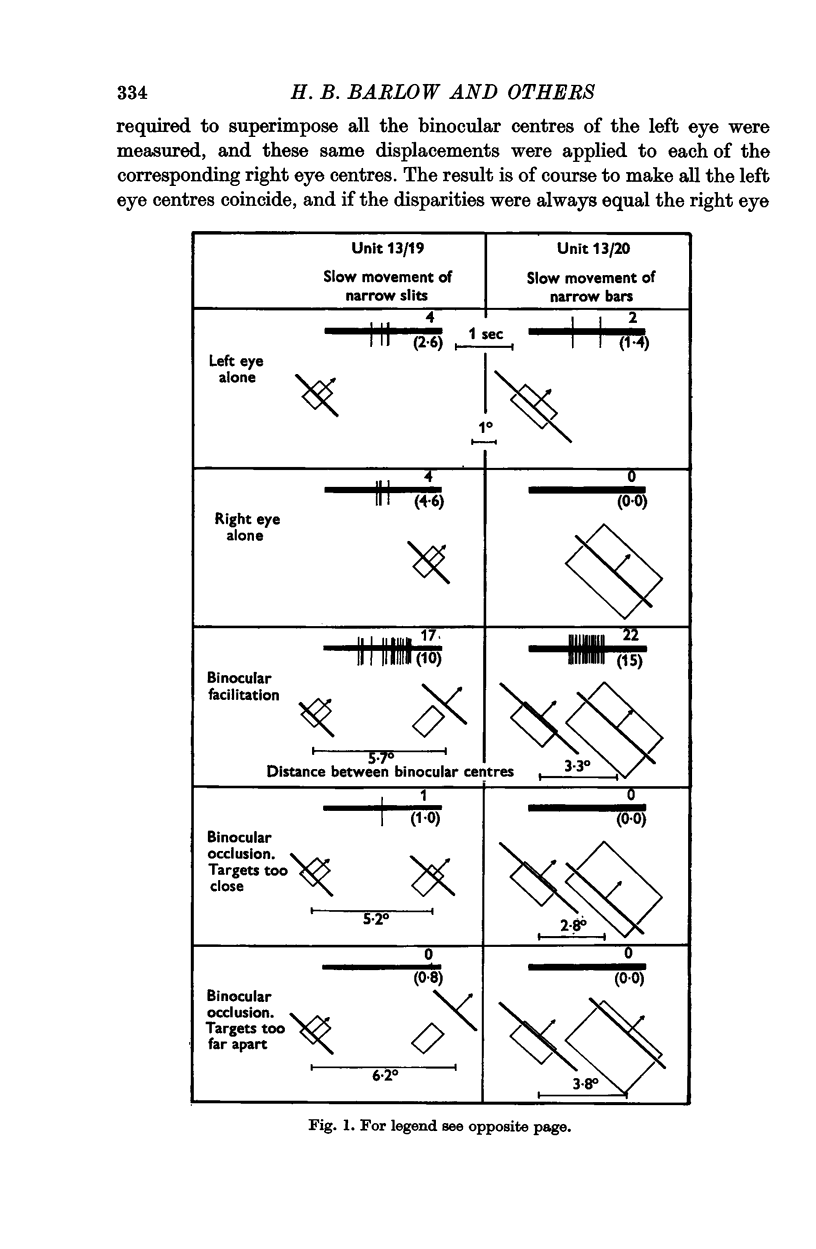
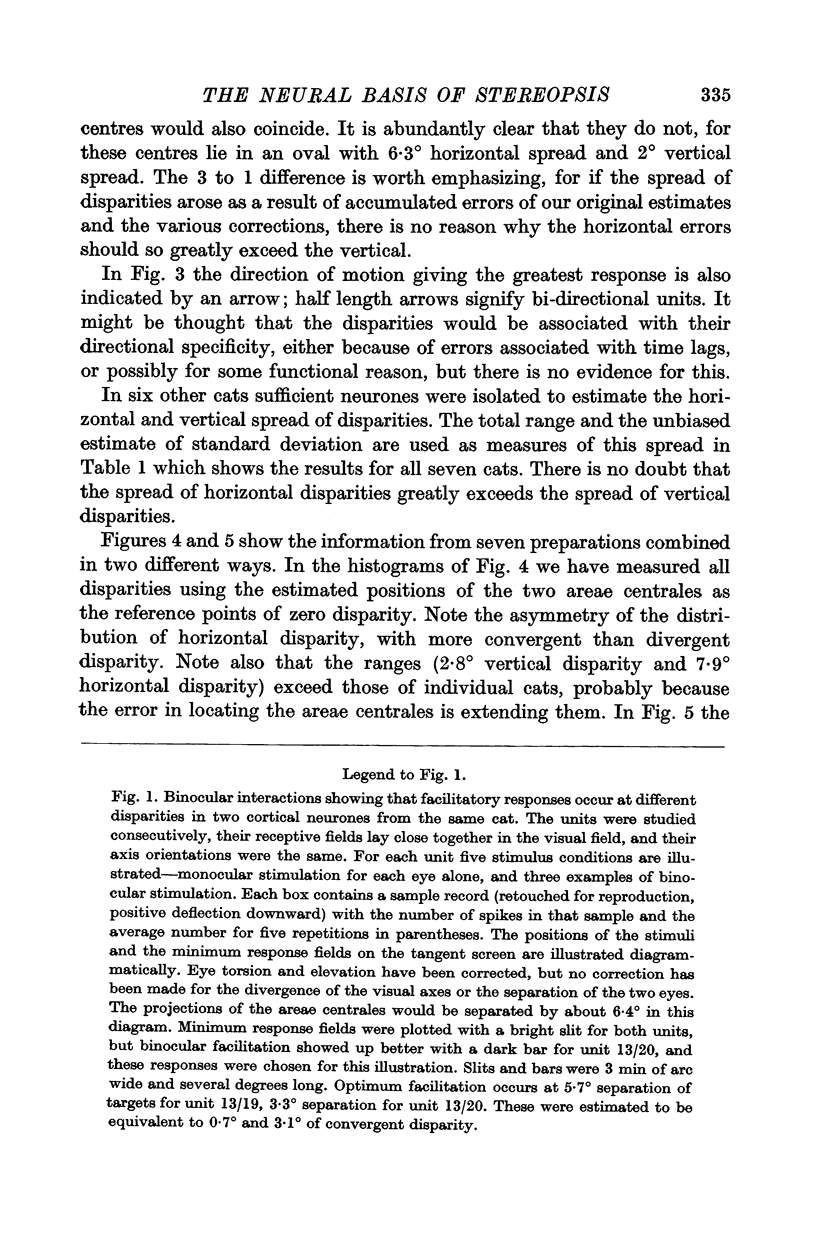
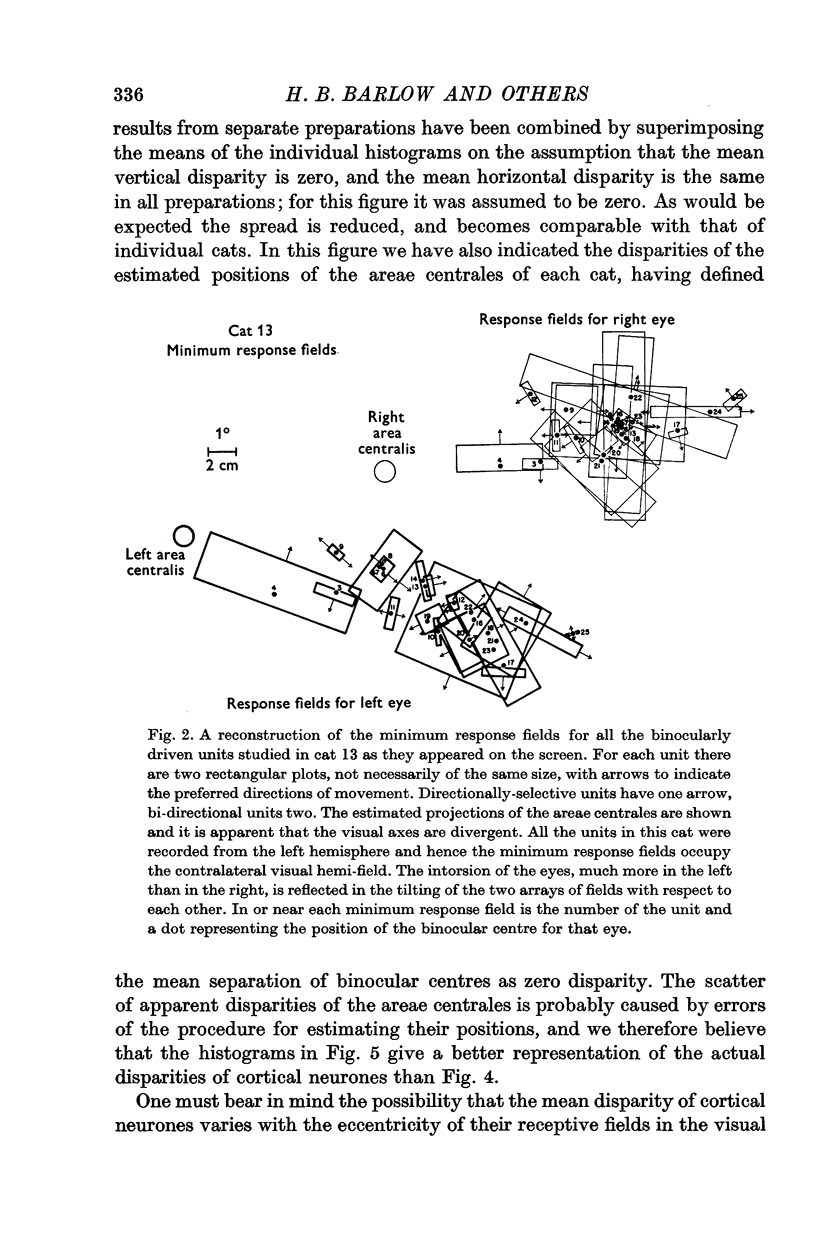
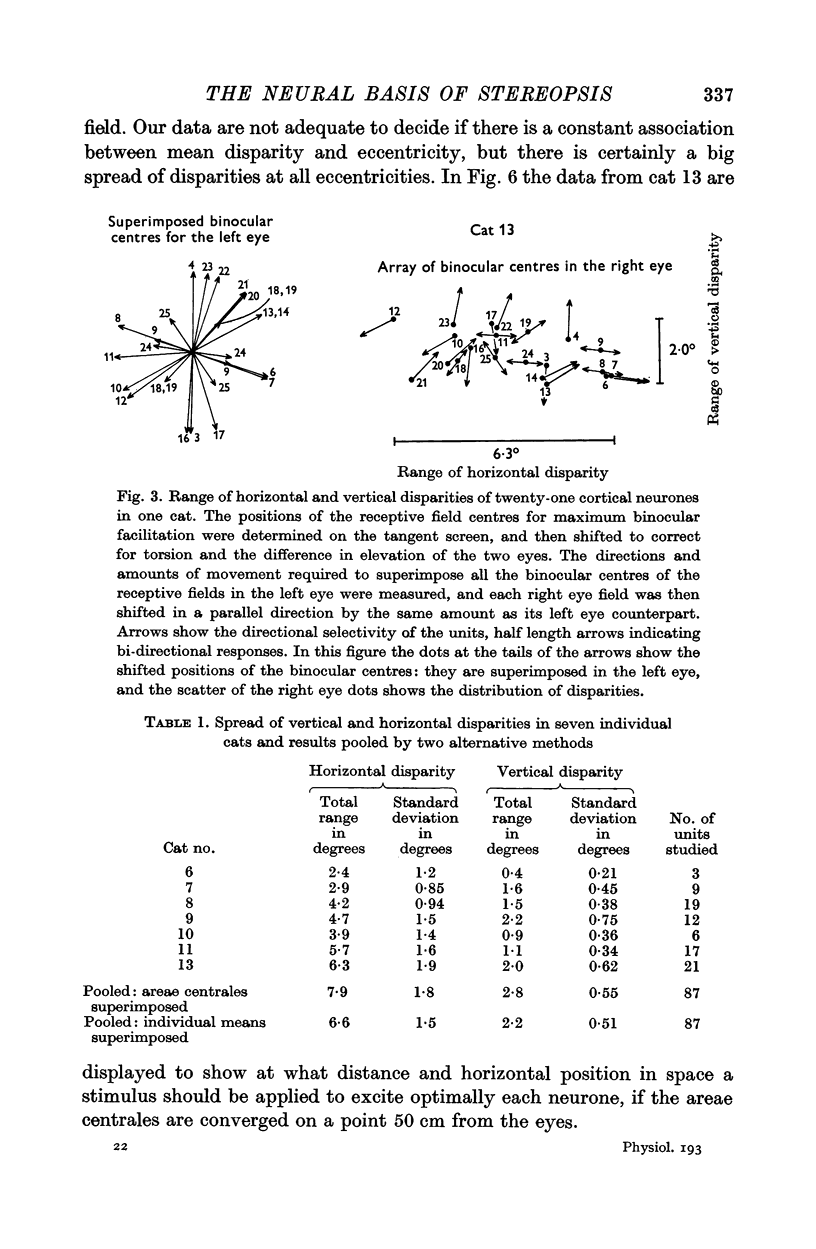
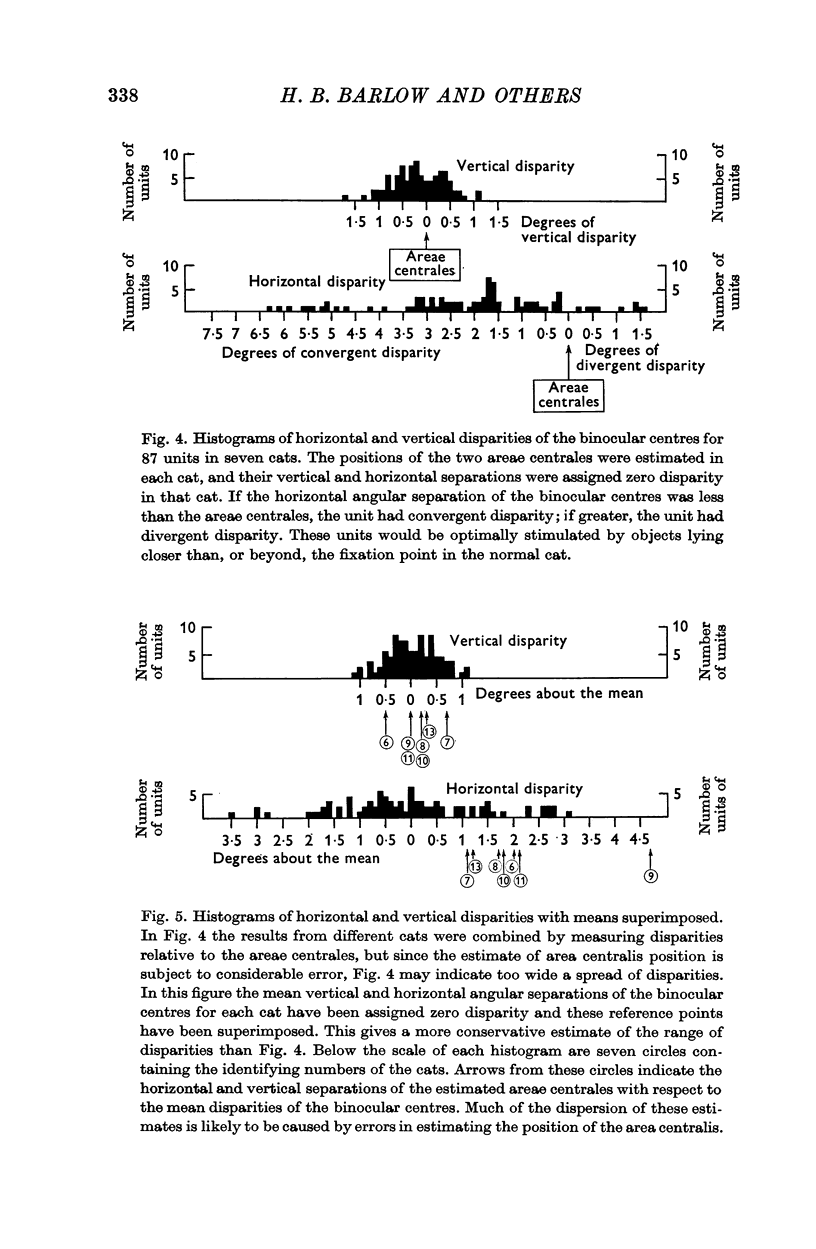
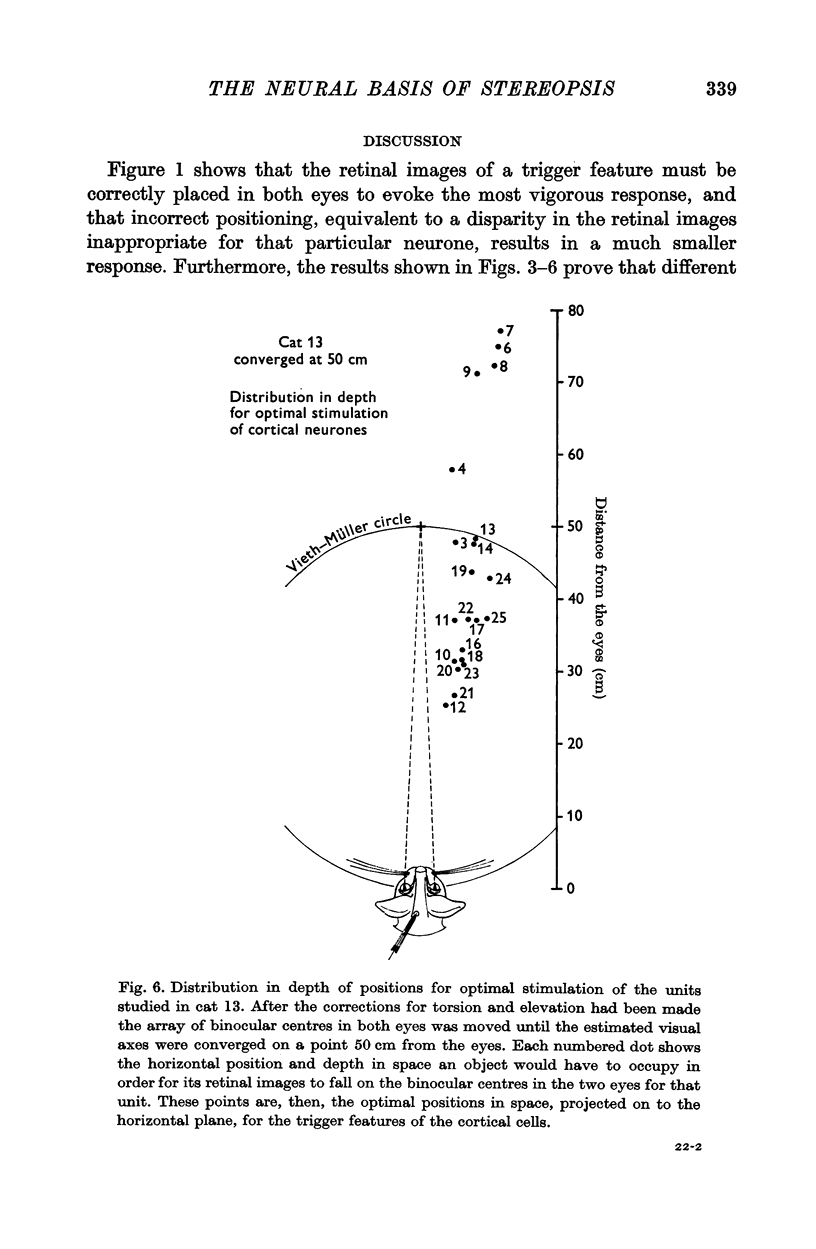
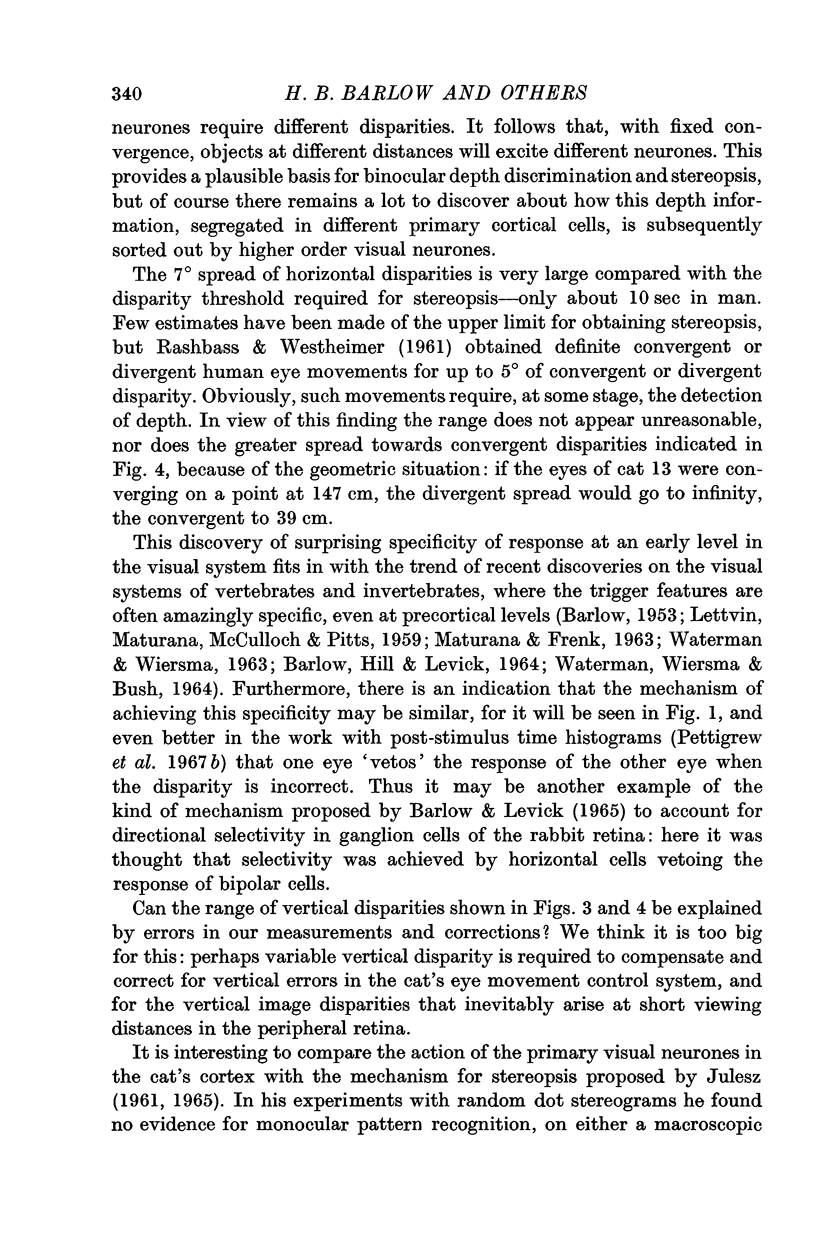
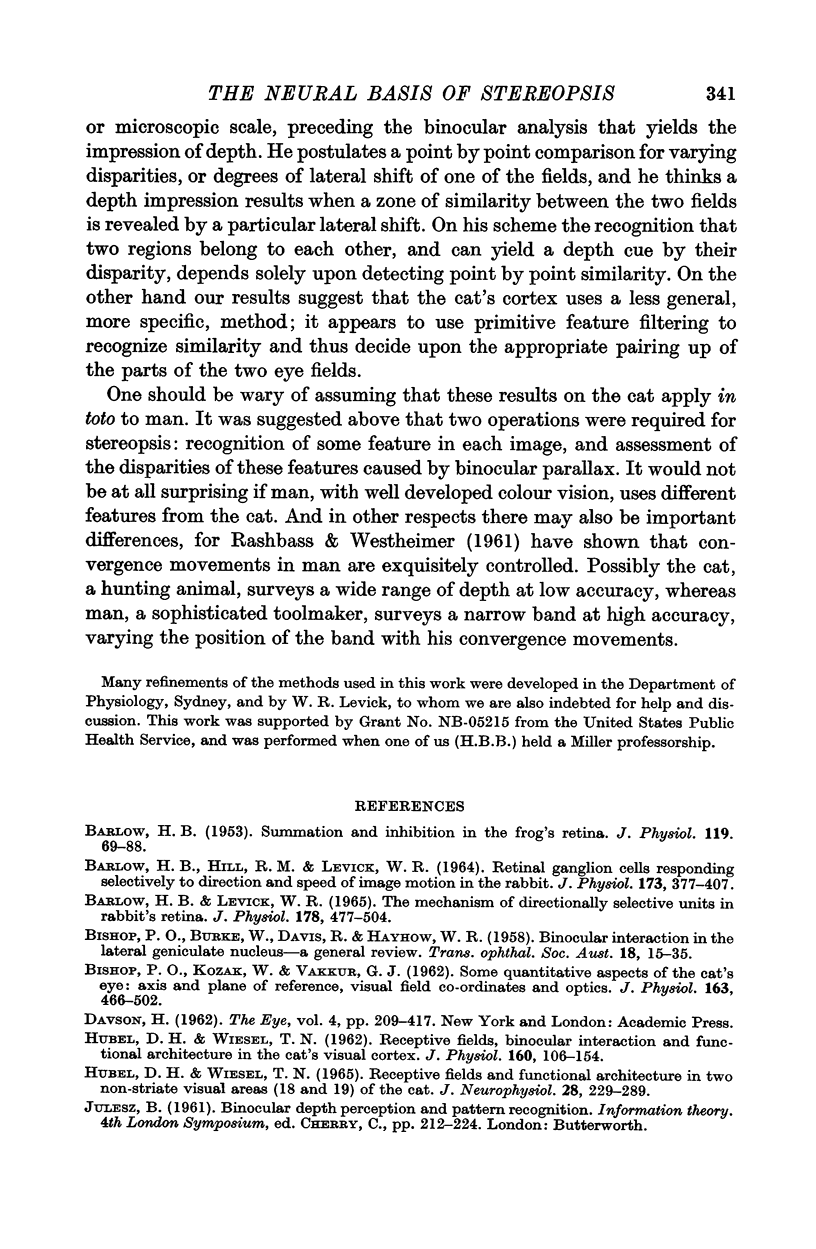
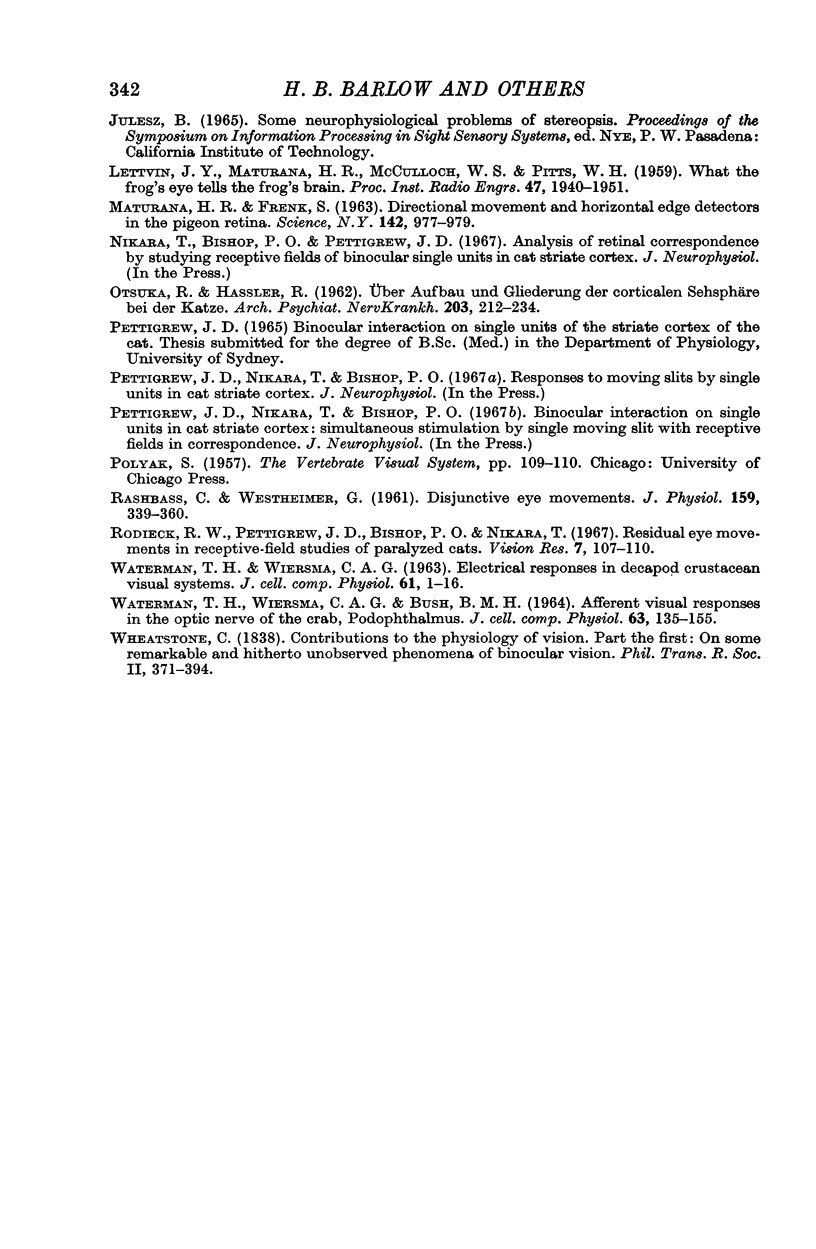
Selected References
These references are in PubMed. This may not be the complete list of references from this article.
- BARLOW H. B., HILL R. M., LEVICK W. R. RETINAL GANGLION CELLS RESPONDING SELECTIVELY TO DIRECTION AND SPEED OF IMAGE MOTION IN THE RABBIT. J Physiol. 1964 Oct;173:377–407. doi: 10.1113/jphysiol.1964.sp007463. [DOI] [PMC free article] [PubMed] [Google Scholar]
- BISHOP P. O., KOZAK W., VAKKUR G. J. Some quantitative aspects of the cat's eye: axis and plane of reference, visual field co-ordinates and optics. J Physiol. 1962 Oct;163:466–502. doi: 10.1113/jphysiol.1962.sp006990. [DOI] [PMC free article] [PubMed] [Google Scholar]
- Barlow H. B., Levick W. R. The mechanism of directionally selective units in rabbit's retina. J Physiol. 1965 Jun;178(3):477–504. doi: 10.1113/jphysiol.1965.sp007638. [DOI] [PMC free article] [PubMed] [Google Scholar]
- HUBEL D. H., WIESEL T. N. RECEPTIVE FIELDS AND FUNCTIONAL ARCHITECTURE IN TWO NONSTRIATE VISUAL AREAS (18 AND 19) OF THE CAT. J Neurophysiol. 1965 Mar;28:229–289. doi: 10.1152/jn.1965.28.2.229. [DOI] [PubMed] [Google Scholar]
- HUBEL D. H., WIESEL T. N. Receptive fields, binocular interaction and functional architecture in the cat's visual cortex. J Physiol. 1962 Jan;160:106–154. doi: 10.1113/jphysiol.1962.sp006837. [DOI] [PMC free article] [PubMed] [Google Scholar]
- OTSUKA R., HASSLER R. [On the structure and segmentation of the cortical center of vision in the cat]. Arch Psychiatr Nervenkr Z Gesamte Neurol Psychiatr. 1962;203:212–234. doi: 10.1007/BF00352744. [DOI] [PubMed] [Google Scholar]
- RASHBASS C., WESTHEIMER G. Disjunctive eye movements. J Physiol. 1961 Dec;159:339–360. doi: 10.1113/jphysiol.1961.sp006812. [DOI] [PMC free article] [PubMed] [Google Scholar]
- Rodieck R. W., Pettigrew J. D., Bishop P. O., Nikara T. Residual eye movements in receptive-field studies of paralyzed cats. Vision Res. 1967 Jan;7(1):107–110. doi: 10.1016/0042-6989(67)90031-4. [DOI] [PubMed] [Google Scholar]
- WATERMAN T. H., WIERSMA C. A., BUSH B. M. AFFERENT VISUAL RESPONSES IN THE OPTIC NERVE OF THE CRAB, PODOPHTHALMUS. J Cell Physiol. 1964 Apr;63:135–155. doi: 10.1002/jcp.1030630203. [DOI] [PubMed] [Google Scholar]
- WATERMAN T. H., WIERSMA C. A. Electrical responses in decapod crustacean visual systems. J Cell Comp Physiol. 1963 Feb;61:1–16. doi: 10.1002/jcp.1030610102. [DOI] [PubMed] [Google Scholar]


